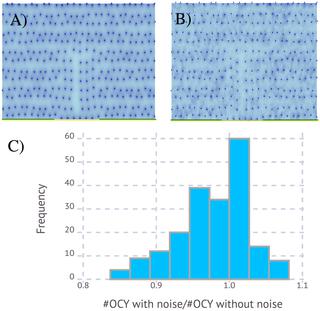PLOS ONE ( IF 3.7 ) Pub Date : 2018-09-19 , DOI: 10.1371/journal.pone.0204171 Clemente F. Arias , Miguel A. Herrero , Luis F. Echeverri , Gerardo E. Oleaga , José M. López

|
The human skeleton undergoes constant remodeling throughout the lifetime. Processes occurring on microscopic and molecular scales degrade bone and replace it with new, fully functional tissue. Multiple bone remodeling events occur simultaneously, continuously and independently throughout the body, so that the entire skeleton is completely renewed about every ten years.Bone remodeling is performed by groups of cells called Bone Multicellular Units (BMU). BMUs consist of different cell types, some specialized in the resorption of old bone, others encharged with producing new bone to replace the former. These processes are tightly regulated so that the amount of new bone produced is in perfect equilibrium with that of old bone removed, thus maintaining bone microscopic structure.To date, many regulatory molecules involved in bone remodeling have been identified, but the precise mechanism of BMU operation remains to be fully elucidated. Given the complexity of the signaling pathways already known, one may question whether such complexity is an inherent requirement of the process or whether some subset of the multiple constituents could fulfill the essential role, leaving functional redundancy to serve an alternative safety role. We propose in this work a minimal model of BMU function that involves a limited number of signals able to account for fully functional BMU operation. Our main assumptions were i) at any given time, any cell within a BMU can select only one among a limited choice of decisions, i.e. divide, die, migrate or differentiate, ii) this decision is irreversibly determined by depletion of an appropriate internal inhibitor and iii) the dynamics of any such inhibitor are coupled to that of specific external mediators, such as hormones, cytokines, growth factors. It was thus shown that efficient BMU operation manifests as an emergent process, which results from the individual and collective decisions taken by cells within the BMU unit in the absence of any external planning.
中文翻译:

骨重塑:从细胞水平的分子算法中出现的组织水平的过程
人体骨骼在整个生命过程中都在不断进行重塑。微观和分子尺度上发生的过程会降解骨骼,并用功能齐全的新组织替代它。多个骨骼重塑事件同时,连续且独立地发生在全身,因此整个骨骼大约每十年更新一次。骨骼重塑是由称为骨多细胞单位(BMU)的细胞群进行的。BMU由不同的细胞类型组成,一些专门用于旧骨的吸收,另一些则负责产生新的骨以替代前者。这些过程受到严格的调节,以使新产生的骨量与去除的旧骨完全平衡,从而保持了骨的微观结构。已经确定了许多与骨骼重塑有关的调节分子,但是BMU操作的确切机制仍有待充分阐明。考虑到已知的信号通路的复杂性,人们可能会质疑这种复杂性是否是过程的内在要求,还是多种成分的某些子集是否可以发挥基本作用,而使功能冗余成为另一种安全性作用。我们在这项工作中提出了BMU功能的最小模型,该模型涉及数量有限的信号,能够说明BMU的全部功能。我们的主要假设是:i)在任何给定时间,BMU内的任何单元只能在有限的决策选择中选择一个,即划分,消亡,迁移或区分,ii)此决定是通过消耗适当的内部抑制剂来不可逆地确定的,并且iii)任何此类抑制剂的动力学都与特定外部介质(例如激素,细胞因子,生长因子)的动力学相关。因此表明,有效的BMU操作表现为一个紧急过程,这是由BMU单元内的单元在没有任何外部计划的情况下做出的个体和集体决策所导致的。



























 京公网安备 11010802027423号
京公网安备 11010802027423号